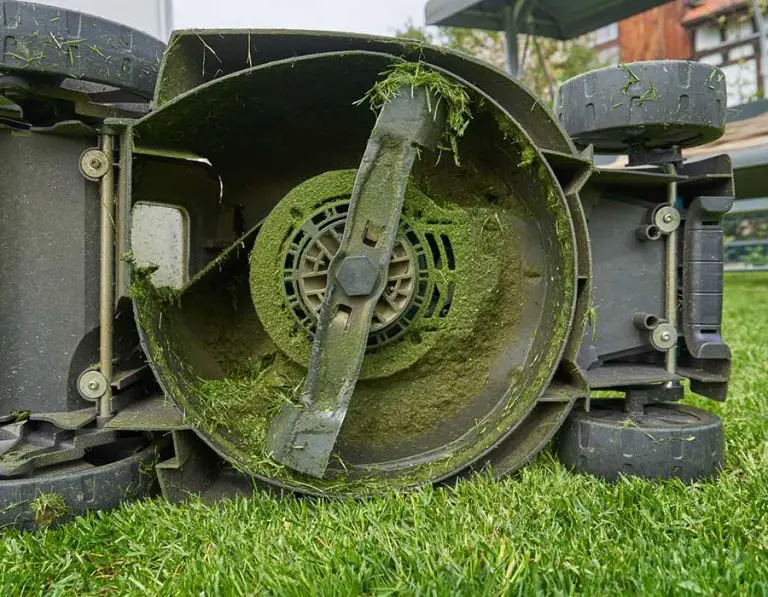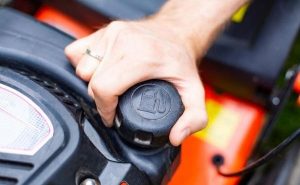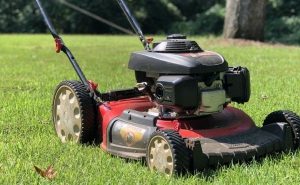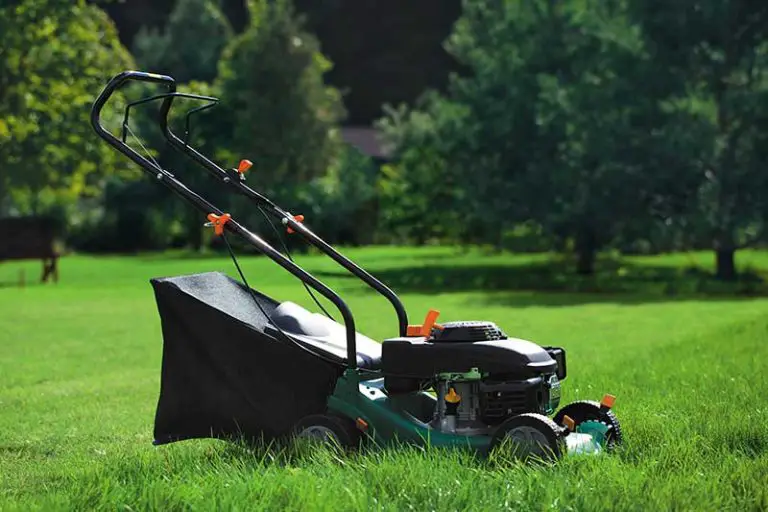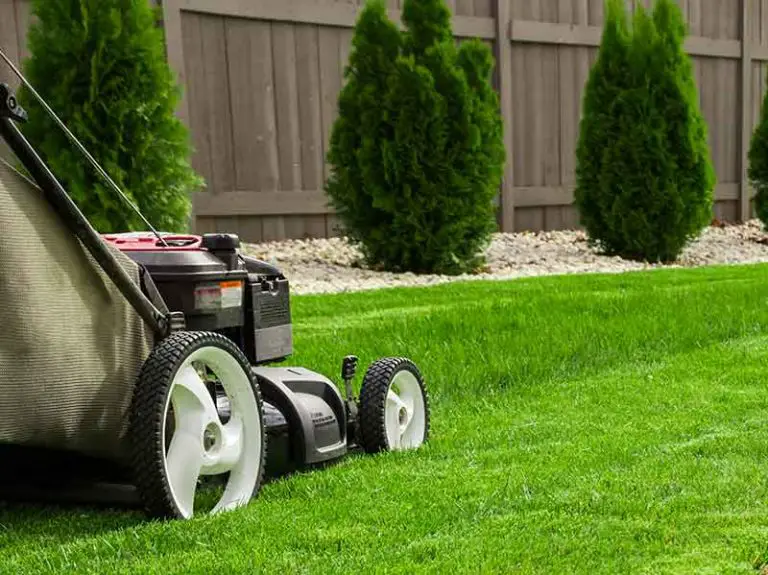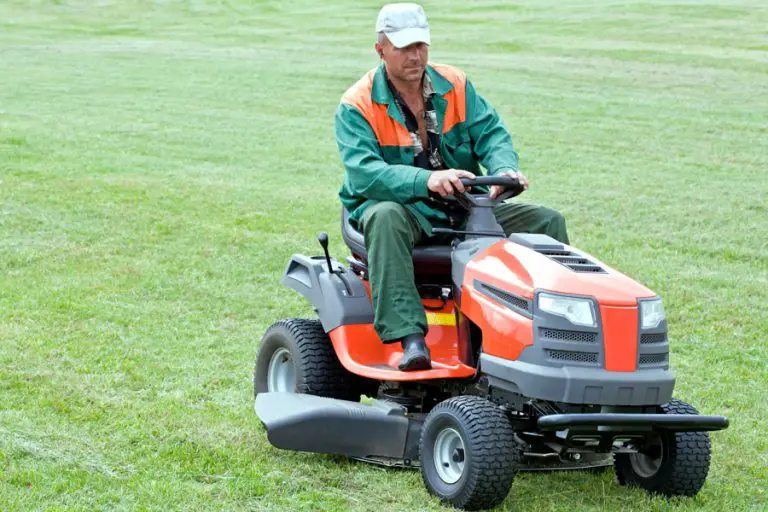Different Types of Lawn Mower
Lawn mowers are a useful piece of kit when it comes to maintaining your lawn. They save time, energy and can ensure that your lawn is looking as neat and picturesque as possible, with minimal effort involved.
As with many tools, there are different types of lawn mower which each provide different advantages and disadvantages. When choosing your lawn mower, it’s important to consider what features are necessary and which ones may be cumbersome or unnecessary for your lawn.
Lawn mowers can be categorized into two different types. These two types of lawn mower are as follows:
- Ride-on mowers
- Push along mowers
Each type of lawn mower has its own different varieties that are available to be purchased. These differences can include size, assembly, how the mower is controlled, and the general shape and components of it.
Lawn mowers are also powered by different power sources. There are four different ways in which a lawn mower can be powered, and they are as follows:
- Gas
- Electricity
- Battery Powered
- Manual Powered
Ride-On Lawn Mowers
Ride-on mowers are the largest and most expensive type of lawn mower available on the market. As the name suggests, they’re designed to be mounted like a vehicle and rode around the lawn as they trim it.
They’re often used for large areas of grass which need to be mowed and can complete tasks in a timely manner due to their size and speed. Ride-on mowers are often powered by gas due to their energy output.
Rear Engine Riding Mower
Rear engine riding mowers are on the smaller side of the different types of riding mowers, and are therefore often used for moderate-to-large sized lawns. These types of lawn mowers are often controlled using a hand lever, and their engines are usually located underneath the driving seat, at the rear end of the machine. As these lawn mowers are ideal for small-to-medium yards, they have small deck sizes between 30-35 inches, making them ideal for use on lawns that are 2.5 acres in size or less.
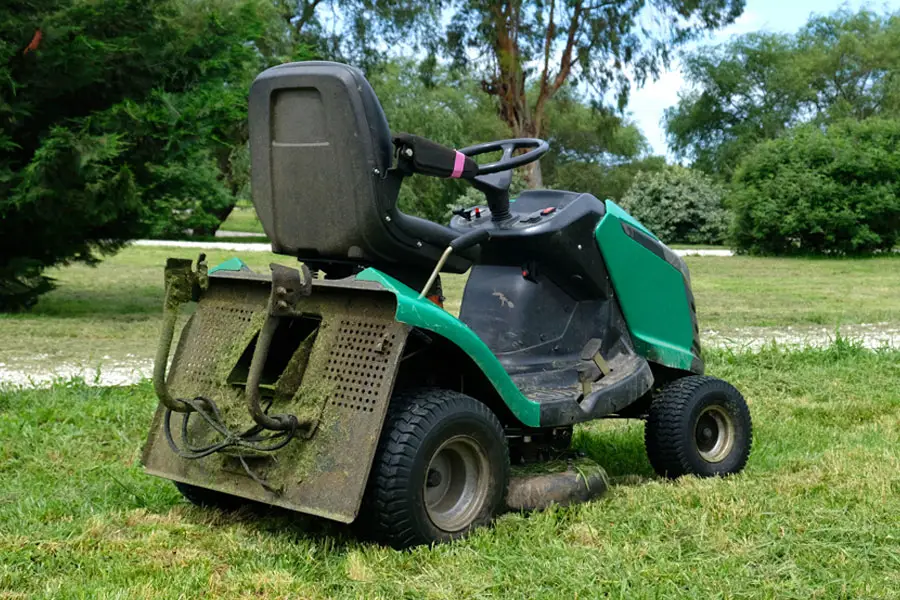
Zero Turn Mowers
Zero turn mowers are on the higher end of available ride-on mowers. These lawn mowers are designed and are able to dodge obstacles with ease, maneuver themselves without issue and have easy to use controls which offer lots of possibilities. Zero turn mowers come in a variety of different sizes, meaning that they’re suitable for small and large lawns respectively. Their decks can range in size from 30”-60”, meaning that if you’re looking for a high performance lawn mower there will be a zero turn one out there that is just the right size for your lawn.
Zero turn lawn mowers have their own distinct look and can be identified mainly by the controls which they use. They are controlled by lap bars which are located in the front seat, which operate dual-hydrostatic controls which allow for easier, more precise steering.
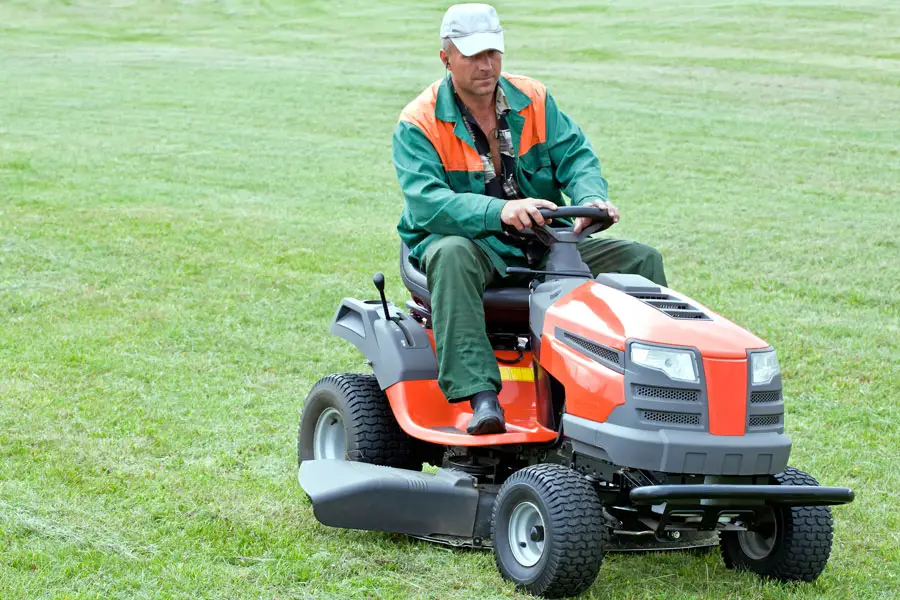
Lawn Tractor
Lawn tractors are the pinnacle of ride-on mowers.They’re big, bulky, and are often what people think about when ride-on mowers are mentioned. As the name suggests, these lawn mowers are fairly similar in stature to tractors, and offer a large front engine. As a result, these tractors are best reserved for large properties, due to their size and power. Their decks can range in size from anywhere between 40”-52”, leaving them on the larger end of the spectrum. Due to their bulk, these lawn mowers offer reduced maneuverability compared to some of their competition, and so aren’t as suited to areas which have a lot of obstacles or are irregularly shaped.
Despite their size and power, lawn tractors are often more affordable than some other ride-on lawn mower types, partially due to their disadvantages.
Walk Mowers
Walk mowers are often the standard lawn mower that people choose to purchase. These mowers are smaller, more inexpensive and operate differently than ride-on mowers. As the name suggests, walk mowers are ones that the operator must walk behind in order to guide them. Unlike ride-on mowers, walk mowers are best suited for small-to-medium lawns, and there is much more variety available.
Walk mowers have the capacity to be either gas powered or electric, providing you with more choices when you’re choosing which model is best for your circumstances.
Rotary Mower
Rotary mowers are named for the blade which they employ to cut the grass beneath them. They’re the most common type of lawn mower available on the market, as they are reliable and easy to use. They cut grass using a singular blade underneath the deck, which rotates in a horizontal motion at high speeds. Whilst popular, rotary mowers don’t offer the same levels of precision as some other types of lawn mower available. As a result, some rotary mowers chop grass more haphazardly than other types of mowers, and are better suited to long and medium length grass due to their lack of customization.
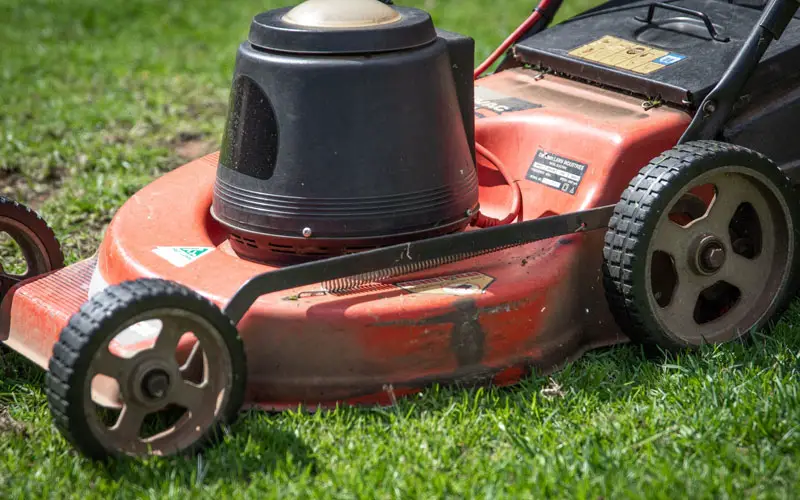
Cylinder Mower
Cylinder mowers, sometimes referred to as reel mowers, work by deploying a collection of vertically rotating cylinder blades at the front end, which allows them to accurately and precisely snip and slice grass as it is walked along. Cylinder mowers have a range of models available, and can be bought with as many as 12 of these blades installed. The more blades present inside a cylinder mower, the more precise and even the cut will be. As a result, it’s not uncommon to see that the price range of cylinder mowers vary due to the amount of blades installed within. Striped lawns can be easily achieved using this type of lawn mower, due to its cutting technique.
Whilst these lawn mowers are fairly high-end and offer a great deal of quality, they do have a few drawbacks which should be considered. For instance, their blades are sometimes very hard to access, leading to increased difficulty when it comes to sharpening blades or undergoing other maintenance tasks. In addition to this, cylinder mowers are also best suited for soft grass types, and are less likely to achieve a smooth, precise cut when faced with coarse or dry grass. Knowing what type of grass you have may help sway your decision when considering buying a lawn mower.
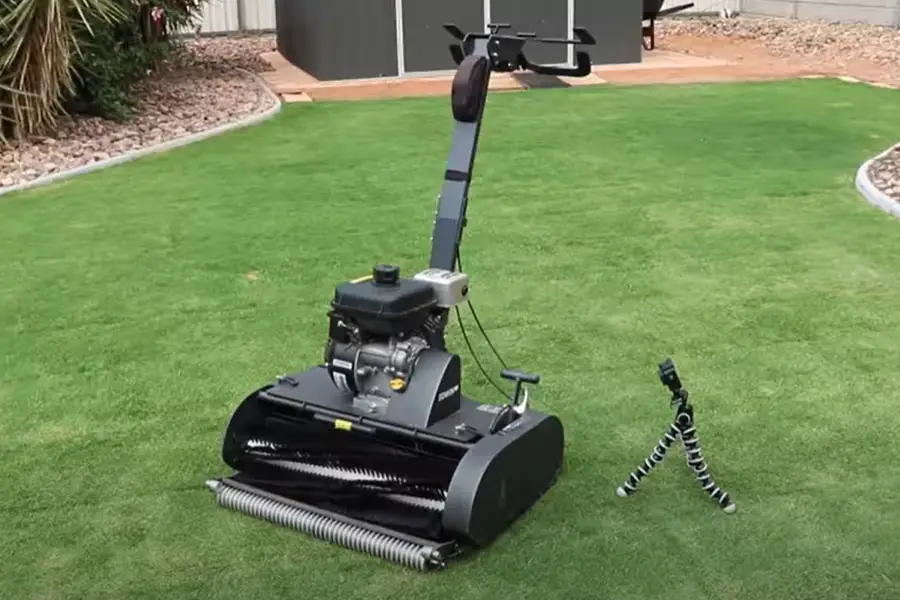
Push Mower
Push mowers resemble the foundation which other lawn mowers are built on. These lawn mowers are hand-steered and are powered solely through the individual pushing them. They’re fairly popular due to their inexpensiveness, size and ease of use. They’re lightweight and possibly the easiest lawn mower type to store due to their size.
Push mowers consist of two wheels connected by a rotating blade which is rotated as the wheels are rolled. Whilst a push mower could be considered simplicity at its best, they are often considered to be very laborious to use due to the extra manpower it takes to manually roll them around the grass, sometimes repeatedly. As a result, these lawn mowers are best reserved for very small, levelled areas.
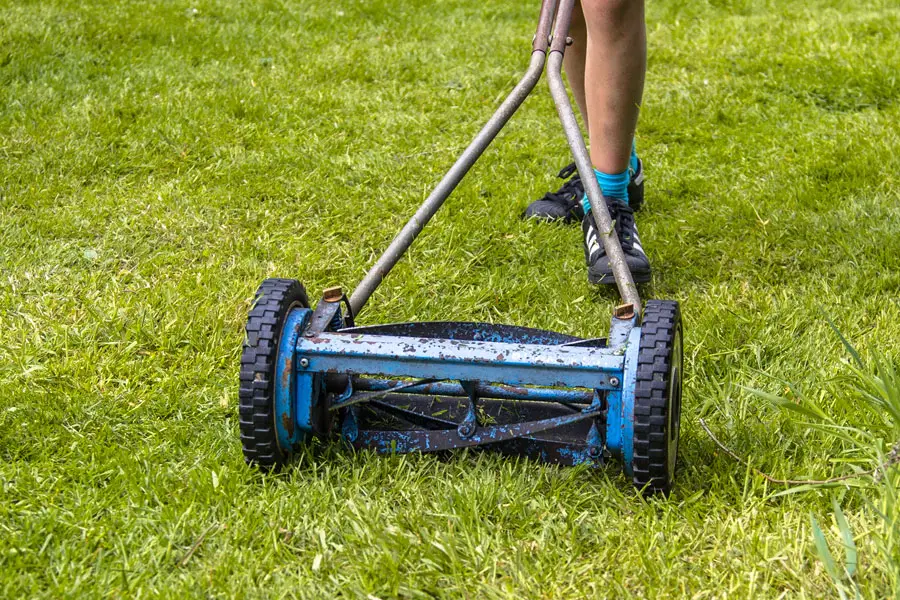
Hover Mower
Hover mowers are chosen by gardeners due to how easy they are to maneuver. They use a cushion of air to keep them a few inches above the lawn, allowing them to be moved around much more freely than other entries mentioned in this list. Their main benefits lay in their ability to be moved so freely, and in any direction. As a result, hover mowers are great for irregularly shaped yards or yards that contain many obstacles. Due to the cushion of air that hover mowers use to keep them running smoothly, additional power is required which can often cause the mower to drain quickly. This prevents hover mowers from working efficiently when mowing large lawns, and they are best left for smaller areas as a result.
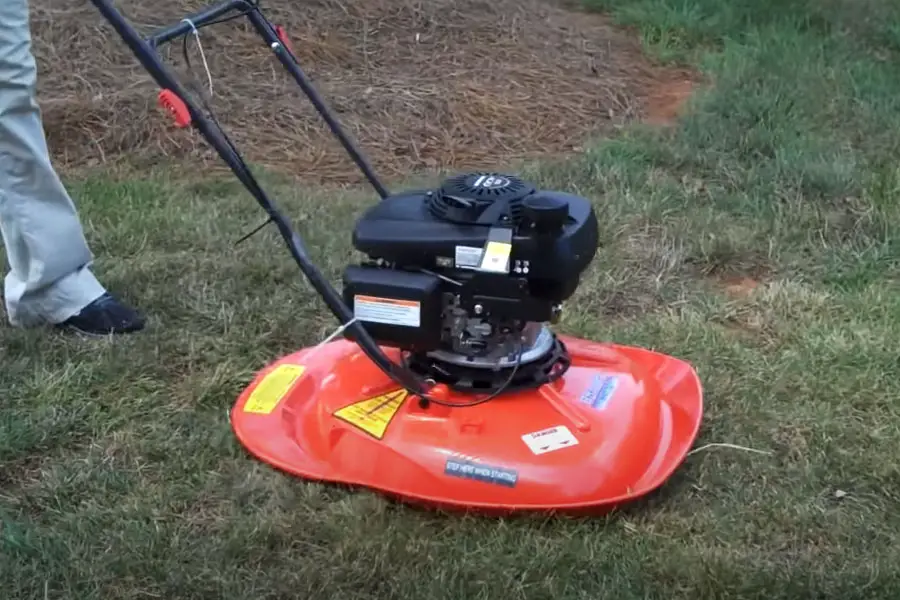
Self-Propelled Mower
Self-propelled mowers do not need to be physically pushed along to ensure an even cut. Rather, they are guided, ensuring that minimal effort is required on the gardener’s part. These mowers offer an even and consistent cut due to the constant speed which they maintain when mowing. As these mowers are self-propelled, they don’t fare particularly well on uneven terrain or on terrain which consists of upward slopes.
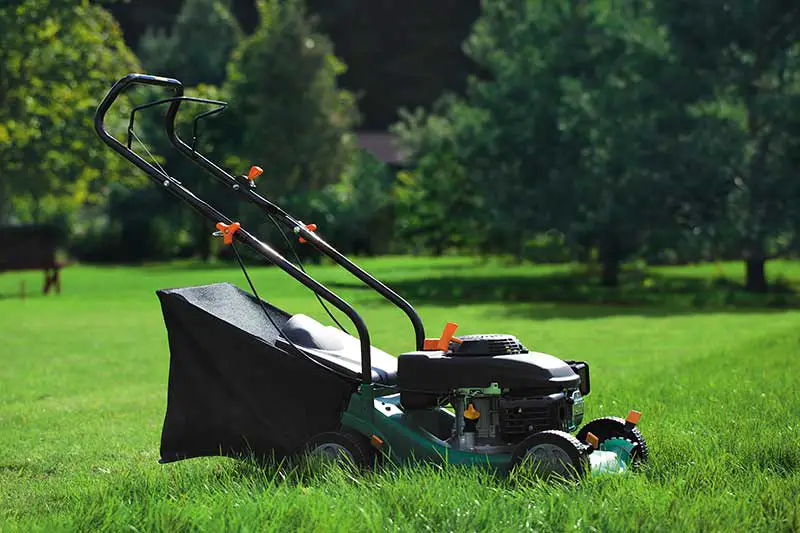
Different Types of Power
Each lawn mower needs some source of power to keep it running, regardless of whether the power is through simple momentum or through external means such as an electric power source. Knowing the different types of power that lawn mowers utilize can help you decide which machine is best suited for your needs. Everyone may have their own preference for power source, based on a variety of factors such as ecofriendliness and price.
Gas Lawn Mowers
Gas powered lawn mowers are popular amongst many gardeners due to their ability to run without the use of a cable. This makes them ideal for covering large areas and can save time spent ensuring the cable isn’t tangled or in the way. Gas powered lawn mowers contain an engine which runs off gas, which leads to different levels of maintenance and preparation. For instance, gas powered lawn mowers are winterized differently to other types of lawn mower, as the gas needs to be correctly removed from them lest it could lead to damage whilst left over winter.
Gas lawn mowers are often cited as being much more durable than some other lawn mowers with different power sources due to their added bulkiness. These lawn mowers are often larger and heavier than other ones on the market due to the engine that needs to be incorporated into them. In addition to this, they’re also noticeably louder due to this engine, and whilst this might not affect you, if you have a preference for mowing your lawn at the crack of dawn, your neighbors may not be particularly appreciative. The upkeep price of gas lawn mowers depends on the ever-fluctuating price of gas. Oftentimes, the additional expense of buying gas for a lawn mower doesn’t add too much money onto bills, but it may be a deterrent.
Gas lawn mowers also produce harmful emissions due to their reliance on gas. These emissions are omitted in other types of lawn mower power sources, so if you’re particularly wary of your carbon footprint, you may want to look into other alternatives.
Larger mowers such as ride-on ones are more likely to rely on gas to run. This is due to their size, and also how inconveniencing an electric cable would be to them if they were to run through the mains. If you’re in the market for a ride-on mower, you may not have much choice in what power source it will have, as they almost exclusively run off of gas.
Electric Lawn Mowers
Electric lawn mowers fall under two categories – those being electric and battery powered. Battery powered lawn mowers will be discussed further down.
Electric lawn mowers use your house’s main electric energy supply as a source of power. These lawn mowers are merely plugged into a socket (preferably an outdoors one), and are then used as normal. Electric lawn mowers are ever increasing in popularity due to their lack of harmful emissions in comparison to gas lawn mowers. In addition to this, electric lawn mowers are also becoming more and more durable, and their lifespans are increasing. This means that they can last as long as gas mowers in some cases, providing they are maintained correctly.
The main downsides to electric lawn mowers are the cables which tether them to the power supply, along with the lack of power some models exhibit.
Due to the power being supplied by a houses’ mains, electric mowers may not have the same levels of capacity that gas mowers do. This is simply due to the fact that the power being supplied to them is not as strong as a gas mower’s is. Whilst this may not detract too much from the overall experience, those who have had previous experience with high powered mowers will be able to notice the difference.
The cables used to connect electric lawn mowers to their sockets can also become annoying. When mowing the lawn, it’s vital to keep the cables away from the mower’s deck to ensure it doesn’t get damaged. If you need to move the mower around a lot, you may find yourself constantly having to readjust the trajectory of the cable.
Whilst the disadvantages of electric lawn mowers may seem irritating, they also have plenty of additional benefits. One of these benefits is that they are quieter than gas mowers, meaning that they can be run without having to worry about what the neighbors might think of you. They’re also more eco friendly, due to the lack of emissions that they produce. Also, due to their constant source of power, it’s unlikely that an electric mower will need to be refilled or repowered during a session, as it is perpetually on and working throughout its use – unlike gas mowers and battery powered mowers. This means that you can spend as long as you want mowing your lawn using an electric mower, with the only thing to worry about being your electricity bill.
Battery Powered Lawn Mowers
Battery powered lawn mowers are not too dissimilar from electric lawn mowers, albeit with one major difference. As these mowers are run from a battery, they are charged up before use and do not have a continual power supply. Before each mow, it’s important to make sure that your battery powered lawn mower is fully charged, so that it will run at its optimal settings. Battery powered lawn mowers behave and work in similar ways to electric lawn mowers, but with a few added benefits and disadvantages. For example, due to the battery pack, battery powered lawn mowers do not require a cable and are not as restricted as electric lawn mowers are. This means that the lawn can potentially be mowed quicker and more evenly as it isn’t necessary to keep stopping to readjust the cable.
On the other hand, battery powered lawn mowers suffer as a result of their conveniences. The battery can severely restrict the amount of time that can be spent mowing the lawn, leaving it ineffective when used for larger lawns. It can also become a hassle having to recharge the battery before each mow, and may be accidentally forgotten about until it is too late.
The actual power of a battery powered lawn mower may be compromised due to its power source. A battery does not have as sufficient a supply as a cable to the mains or gas does. As a result, battery powered lawn mowers can sometimes be unreliable and untrustworthy. As a result, these types of mowers are best used for small gardens.
Manual Powered Lawn Mowers
The only source of power that manual powered lawn mowers rely on is manpower. These mowers are powered by the momentum made as they are pushed around the garden, forcing their blades to spin or rotate. This type of mower has several disadvantages and advantages, but are mostly preferred due to their affordability and smaller stature compared to other mowers.
As manual powered lawn mowers are powered only by the individual behind them, they are notoriously tiresome to use. Whilst this is great if you’re considering adding to your exercise routine, some people may be put off by this. They are not great for uphill mowing due to the excess force that is needed to push them, nor are they good for those who may not be able to maintain the strength needed to push this type of mower around the garden.
Manual powered lawn mowers, however, are the quietest mower available on the market, which makes them ideal for use in small gardens in residential areas.
In addition to this, they’re also the most eco friendly lawn mower available due to their lack of engine. Manual powered lawn mowers don’t use any form of power to run them, aside from the strength of the individual pushing it. This makes this type of mower ideal for anyone who is looking to decrease their harmful emissions, who may also have a small garden or lack of storage space.
Types of Drive
In addition to a variety of different power sources, each lawn mower will also have its own drive. The purpose of a drive is to help determine which type of terrain your lawn mower will perform best on. Lawn mowers are typically classified under one of the following drives:
- Front-wheel drive (FWD)
- Rear-wheel drive (RWD)
- All-wheel drive (AWD)
Certain drives are better suited for certain terrains, so if you want your lawn mower to reach optimal performance, it’s important to make sure that the drive is appropriate for your garden.
Front Wheel Drive
Front wheel drive lawn mowers are propelled by their front wheels, and their rear wheels simply follow. This type of drive is best suited for levelled lawns which don’t require any uphill walking due to the lack of power in the back end of the lawn mower. Front wheel drives are easy to maneuver, and are easy to steer around irregularly shaped lawns or any obstacles in the way.
Rear Wheel Drive
Rear wheel drive lawn mowers are only propelled using their back wheels. Unlike FWD lawn mowers, rear wheel drive mowers are ideal for pushing up steep inclines or over other unsteady terrain. Whilst they aren’t ideal in small gardens due to the difficulty they have moving, they are great for bumpy, uneven areas. They may need a large area in order to change direction and can struggle to reverse.
All Wheel Drive
All wheel drive mowers are the most powerful when it comes to the different drives available. This is due to the power being equally spread between all four wheels of the equipment, allowing for a much more even walk. As a result, all wheel drive mowers are fast and powerful, and can handle most terrain fairly easily. Their main downside is that they may struggle to turn or maneuver around obstacles or irregularities due to their speed and power.
Things to Consider when Buying a Lawn Mower
When buying a lawn mower, there are various things to consider. Lawn mowers are often an expensive piece of equipment, so it’s important to invest in one that will suit your needs as best as possible, to ensure you won’t have any regrets.
By thinking about your requirements and preferences, it’s easier to choose which type of lawn mower is best suited for you.
Size of your Lawn
The size of your lawn can be an important factor when it comes to choosing a new lawn mower. As discussed previously, certain lawn mowers are best suited for certain lawn sizes. For instance, most ride-on mowers available are best saved for areas that are at least 2.5 acres in size. Whilst larger lawns will require larger mowers, smaller lawns also have their fair share of mowers that are optimal, such as push mowers or hover mowers.
Shape of your Lawn
The shape of your lawn may not seem like it could be a potential dividing factor in what lawn mower you choose, but certain lawn mowers do perform better than others when it comes to maneuvering. Some also are better suited for uphill mowing than others, so take into consideration the shape of your lawn and any inclines or ditches that may be incorporated into it.
Type of Grass
The type of grass you have in your yard may impact the effectiveness of some types of lawn mower. Some mowers are best suited for soft grass, whilst others are made for dealing with coarse grass.
Emissions
Certain types of lawn mowers are likely to produce more emissions than others. If you’re particularly environmentally conscious, you may steer towards electric or battery powered lawn mowers as opposed to gas powered ones, as they produce the most emissions. The only type of lawn mower to require no source of energy is that of the manual powered lawn mower, which don’t create any emissions or use any power source.
Noise
Some lawn mowers are much louder than others. Whilst this may not be the most important thing to consider when purchasing, it’s certainly something worth thinking about if faced with a dilemma. Electric, battery powered and push powered mowers are the quietest options when it comes to mowing the lawn, whilst gas lawn mowers often produce the most noise. When considering the noise levels, think about what time you usually mow your lawn. If you mow it early in the morning or during the night, you could potentially wake people up. Sometimes the noise levels are unavoidable, but if you have a small garden in a residential area, there are definitely more accommodating mowers available.
Price
It goes without saying that the price range is important when it comes to deciding on a new lawn mower, or any new gardening equipment for that matter. Lawn mowers can easily become more and more expensive given the added features some may carry. The most expensive lawn mowers are often ride-on ones, as they feature much more substantial engines, blades and are larger with much more machinery packed inside. When deciding on a lawn mower, make sure you have clear objectives in mind along with a budget. Whilst some addons may seem exciting, there will also be ones that are completely unnecessary or irrelevant to you.
The average price of a lawn mower is approximately $1000. Whilst this price incorporates all types of mowers, including ride-on mowers, it’s a good starting point if you’re thinking about purchasing a new mower.
Cheaper mowers, of course, may come fraught with issues. Make sure to read reviews online to ensure that the mower you’re buying is legitimate, works correctly and will last at least five years.
The average lifespan of a lawn mower is 10 years, and as materials are improving, all different types of lawn mowers are beginning to last this long, not just the ones that were traditionally known as durable, like gas lawn mowers.
Maintenance
All lawn mowers will have to undergo maintenance at some point. Whilst the level of maintenance can vary from simple blade sharpenings to parts replacement, they will at some point need to be maintained to ensure that they work at their best possible potential.
Certain types of lawn mower are more prone to maintenance issues than others, and will need additional maintenance to keep them working as normal. Traditionally, gas lawn mowers require more maintenance due to their makeup, and the additional parts used to keep them running. They need to be winterized more extensively than electric mowers, to ensure that the gas inside them doesn’t damage the interior. All mowers will need to have their blades sharpened eventually, and it is a fairly easy task to undertake. However, if you aren’t keen on keeping a close eye on your lawn mower’s performance, there are lawn mowers available that will not require as much maintenance.
Time
The time it takes to mow your lawn can have a big impact on how you feel about the task. If your lawn mower is particularly slow and cumbersome, it could put you off mowing the lawn when it’s needed, and could eventually lead to your grass becoming too long and overgrown. As previously discussed, all wheel drive mowers are the fastest and most powerful mowers for the job. Depending on the size of your lawn, there are different mowers that could be deployed to make the task breeze by.
Final Thoughts
There are many different factors to consider when purchasing a lawn mower, just as there are many different types of lawn mower to choose from. Knowing exactly what kind of garden you have, what your ideal lawn looks like and which feature you’ll need your lawn mower to have are all great ways to begin to decide which lawn mower is best for you. Even though there are only two categories of lawn mowers and a few ways in which they are powered, there are a vast selection of subcategories to choose your lawn mower from.

